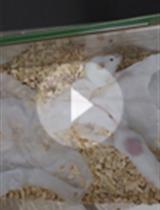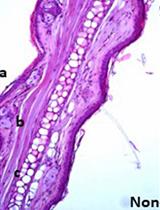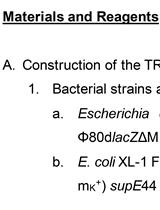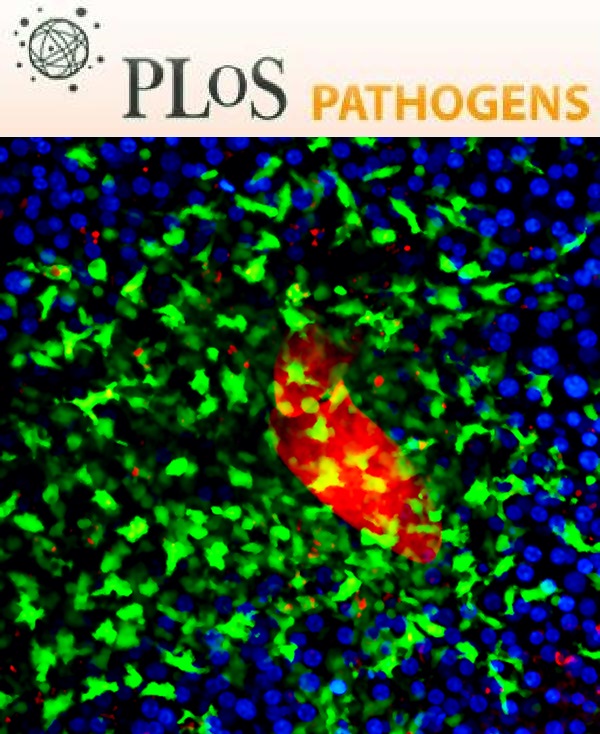- Submit a Protocol
- Receive Our Alerts
- Log in
- /
- Sign up
- My Bio Page
- Edit My Profile
- Change Password
- Log Out
- EN
- EN - English
- CN - 中文
- Protocols
- Articles and Issues
- For Authors
- About
- Become a Reviewer
- EN - English
- CN - 中文
- Home
- Protocols
- Articles and Issues
- For Authors
- About
- Become a Reviewer
Preparation of Candida albicans Biofilms Using an in vivo Rat Central Venous Catheter Model
Published: Vol 3, Iss 14, Jul 20, 2013 DOI: 10.21769/BioProtoc.823 Views: 9425
Reviewed by: Fanglian He

Protocol Collections
Comprehensive collections of detailed, peer-reviewed protocols focusing on specific topics
Related protocols

Visualizing Hypoxia in a Murine Model of Candida albicans Infection Using in vivo Biofluorencence
José Pedro Lopes and Constantin F. Urban
Aug 5, 2019 4918 Views

RNA Extraction from Ears and Draining Lymph Nodes of Mice Infected with Leishmania amazonensis
Emilie Giraud and Evie Melanitou
Jun 5, 2020 5346 Views

TetR Regulated in vivo Repression Technology to Identify Conditional Gene Silencing in Genetically Engineerable Bacteria Using Vibrio cholerae Murine Infections as Model System
Franz G. Zingl [...] Stefan Schild
Oct 5, 2020 3517 Views
Abstract
In vivo biofilms grown on medical devices are necessary to understand the interactions of the fungal biofilm and the host environment in which it is most commonly found. This protocol describes a way to grow Candida albicans biofilms on the interior lumen of central venous catheters surgically implanted into rats, which mimics quite well the clinical cases of biofilms found on human central venous catheters. These infected catheters can then be studied via a multitude of different experiments, including cell counting by plating, imaging the catheters under light or electron microscopy, or comparing the relative content of in vivo biofilms to in vitro biofilms and planktonic cultures. These biofilms also provide enough high quality RNA for transcriptional profiling.
Keywords: CandidaMaterials and Reagents
- 350 g Specific-pathogen-free male Sprague-Dawley rats (Harlan)
- Plate containing grown Candida albicans colonies
- Ethylene oxide
- 4 way Large Bore (lipid resistant) Stopcock (Baxter, catalog number: 2C62047 )
- Xylazine (Sigma-Aldrich, catalog number: X1126 )
- Ketamine (Sigma-Aldrich, catalog number: K2753 )
- Bacitracin (Sigma-Aldrich, catalog number: B0125 )
- Bacto-peptone (BD Biosciences, catalog number: 211677 )
- Bacto-yeast extract (BD Biosciences, catalog number: 212750 )
- Betadine (SWIFT, catalog number: 159935 )
- Difco agar (BD Biosciences, catalog number: 214530 )
- Difco dextrose (BD Biosciences, catalog number: 215530 )
- Heparin 1,000 U/ml (Sigma-Aldrich, catalog number: H3393 )
- Intramedic PE 160 polyethylene tubing (BD Biosciences, catalog number: 427430 )
- Needle holder (World Precision Instruments, catalog number: 14109 )
- Silk braided sutures (size 2-0) (Thermo Fisher Scientific, catalog number: 14-516-130 )
- Size med rat jacket (Braintress Scientific, catalog number: RJ-M )
- Sodium chloride (Thermo Fisher Scientific, catalog number: S671-3 )
- Sterile surgical draping materials (autoclaved hospital towels)
- Surgical button attached to wire rat tether (Instech Solomon, catalog number: LW95S )
- Uridine (Sigma-Aldrich, catalog number: U3750 )
- Xylazine/ketamine anesthetic (see Recipes)
- YPD + uridine media (see Recipes)
- Heparinized saline (see Recipes)
- 0.85% saline solution (see Recipes)
- YPD + uridine plates (see Recipes)
Equipment
- Iris scissors (Braintree Scientific, catalog number: SC128 )
- Metzenbaum scissors (Braintree Scientific, catalog number: SC126 )
- Micro scissors (Braintree Scientific, catalog number: SC152 )
- Hartman Mosquito-Hemostatic forceps (World Precision Instruments, catalog number: 15920 )
- Adson forceps (Braintree Scientific, catalog number: FC028 )
- Micro-Tissue forceps (Braintree Scientific, catalog number: FC145 , FC146 , FC147 )
- Scalpels (Bladex, catalog number: 22-080-087 )
- 35 mm Surgical staples and associated stapler (Ethicon Endo-Surgery, catalog number: TR35B )
- Animal Care Facilities
- Gas sterilization chamber
- Hemocytometer
- Shaking incubator with adjustable temperatures and speeds
- Vein scissors
Procedure
- Cut polyethylene tubing into 54 cm segments and gas sterilize using ethylene oxide.
- Anesthetize rats with roughly 0.5 ml intraperitoneal (i.p.) injection with 1 mg/kg of xylazine/ketamine mixture.
Note: Exact volume will depend on the size of the rat. - Shave the neck, midscapular space, and anterior chest of the rats to be catheterized and scrub with betadine.
- Prep a sterile surgical space containing the rat in a supine position.
- Fill the catheter piece with 540 μl of heparin (100 U/ml) via a 2 way stopcock. Once filled, place stopcock in the locked position to ensure sterility.
- Create a vertical incision just right of the midline of the anterior neck and horizontal cut in the midscapular region. Tunnel the catheter subcutaneously from the midscapular region to the vertical incision (secure subcutaneous button end with staple at midscapular area leaving rat wire tether exposed).
- Use blunt surgical dissection to find and expose jugular vein and tie off cranial end.
- Make a small longitudinal incision in the wall of the internal jugular vein with vein scissors.
- Place catheter in incision and advance along the vein until approximately 2 cm above the right atrium. Check for proper placement by opening stopcock and checking for flash of blood flowing inside catheter.
- Secure catheter to the vein with 2-0 silk ties. Close stopcock.
- Close incision site with surgical staples.
- Treat surgical sites with bacitracin and place rat jacket on.
- Rats are allowed to rest for 24 h to recover from the catheter placement and their recovery from surgery assessed according to standard animal care protocols.
Note: Throughout rest of study, check on health of rats every 8hr and flush catheters with heparinized saline once a day. - During 24 h rest period for the rat, 5 ml of YPD + uridine culture in a 15 ml conical tube is inoculated with a single colony of Candida albicans growing on a plate. Ideally, colony should have grown large enough to be picked easily (usually takes ~ 2 days) but not so old that it starts to lose its circular shape (usually after about 10 days of growth). Most Candida strains will grow well on YPD + uridine agar plates, but any medium that allows the strain to be studied to grow well can be used.
- Inoculum is incubated overnight at 30 °C and 200 rpm.
- Cell concentration of overnight culture is determined by cell counting on a hemocytometer.
- Inoculum diluted to 1 x 106 cells/ml in 0.85% saline.
Viable cell counts are confirmed by plating unused inoculum on YPD + uridine plates. - 540 μl of diluted inoculum is added to the intraluminal portion of the catheter (via stopcock) and allowed to adhere for 6 h.
- Inoculum is then removed through stopcock in the open position and the catheter volume is filled with 100 U/ml heparinized saline. The stopcock is then closed.
- Microbes within the catheters are then allowed to grow for 48 h.
Note: If desired, drugs can be administered into the catheter lumen (via stopcock) after 24 h of growth to test in vivo drug susceptibility of biofilms. - At the end of the growth period, rats are sacrificed according to animal safety protocols. Catheters are removed from the rats in a sterile surgical environment with all sterile tools and supplies, and cut into roughly 1-2 cm long segments.
- At this point, protocols diverge based on the nature of the in vivo experiment being conducted.
Recipes
- Xylazine/ketamine anesthetic
Combine 20 mg/ml xylazine and 50 mg/ml ketamine in a 1:3 vol/vol ratio - YPD + uridine media
Combine all ingredients and aliquot into 100 ml bottles. Autoclave bottles on liquid cycle to sterilize.Bacto-yeast extract (1%) 10 g Bacto-peptone (2%) 20 g Dextrose (2%) 20 g Uridine 0.08 g Distilled water 1,000 ml - Heparinized saline
Dilute heparin to 100 U/ml in 0.85% saline solution - 0.85% saline solution
Autoclave on liquids cycle.Sodium Chloride 4.25 g Distilled water 500 ml - YPD + uridine plates
Combine all ingredients in 2 L flask and autoclave on liquids cycle to sterilize before pouring plates.Bacto-yeast extract (1%) 10 g Bacto-peptone (2%) 20 g Dextrose (2%) 20 g Bacto-agar (2%) 20 g Uridine 0.08 g Distilled water 1,000 ml
References
- Andes, D., Nett, J., Oschel, P., Albrecht, R., Marchillo, K. and Pitula, A. (2004). Development and characterization of an in vivo central venous catheter Candida albicans biofilm model. Infect Immun 72(10): 6023-6031.
- Taff, H. T., Nett, J. E., Zarnowski, R., Ross, K. M., Sanchez, H., Cain, M. T., Hamaker, J., Mitchell, A. P. and Andes, D. R. (2012). A Candida biofilm-induced pathway for matrix glucan delivery: implications for drug resistance. PLoS Pathog 8(8): e1002848.
Article Information
Copyright
© 2013 The Authors; exclusive licensee Bio-protocol LLC.
How to cite
Readers should cite both the Bio-protocol article and the original research article where this protocol was used:
- Taff, H. T., Marchillo, K. and Andes, D. R. (2013). Preparation of Candida albicans Biofilms Using an in vivo Rat Central Venous Catheter Model . Bio-protocol 3(14): e823. DOI: 10.21769/BioProtoc.823.
- Taff, H. T., Nett, J. E., Zarnowski, R., Ross, K. M., Sanchez, H., Cain, M. T., Hamaker, J., Mitchell, A. P. and Andes, D. R. (2012). A Candida biofilm-induced pathway for matrix glucan delivery: implications for drug resistance. PLoS Pathog 8(8): e1002848.
Category
Microbiology > Microbial biofilm > Biofilm culture
Microbiology > Microbe-host interactions > In vivo model > Mammal
Do you have any questions about this protocol?
Post your question to gather feedback from the community. We will also invite the authors of this article to respond.
Tips for asking effective questions
+ Description
Write a detailed description. Include all information that will help others answer your question including experimental processes, conditions, and relevant images.
Share
Bluesky
X
Copy link









